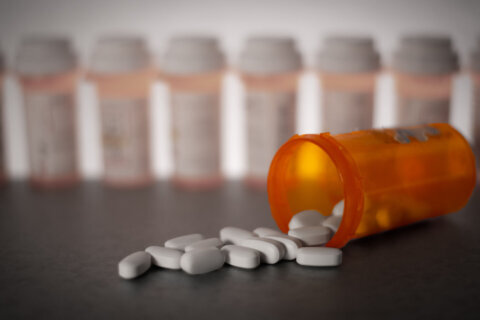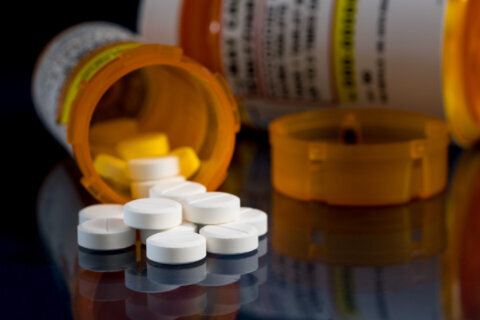This content is sponsored by Emergent Biosolutions.
The opioid crisis has become much worse across the United States during the coronavirus pandemic, shedding light on the growing importance of medications such as naloxone, which can help save someone’s life during an opioid overdose.
“We have worked very closely with state and public health organizations, community organizations, first responders and others to make sure that they have access to naloxone,” said Doug White, senior vice president for the devices business unit at Emergent.
“We look at naloxone as a second chance,” White said. “It’s an opportunity to get someone in recovery so it’s a critical component in addressing the opioid crisis.”
Emergent is a global company that develops, manufactures and delivers specialty products for civilian and military populations that address public health threats. It also offers contract development and manufacturing services to pharma and biotech innovators, governments and NGOs who need clinical-to-commercial manufacturing support.
The pandemic’s impact
While the opioid crisis began to show signs of slowing down in 2018 and 2019, the coronavirus pandemic put a stop to that.
“More than 100,000 Americans died of drug overdoses during the 12 months following the COVID-19 lockdowns, the most overdose deaths ever recorded in a one-year span,” as reported by USA Today.
And according to The Lancet, in 2020, fatal opioid overdoses reached record highs in the United States (over 70,000 deaths) and Canada (over 6,000 deaths), with addiction and overdoses persisting among individuals using any or all of prescription opioids, heroin and synthetic opioids such as fentanyl.
Some people in recovery struggled to maintain sobriety, while others turned to drugs to cope.
“The isolation and uncertainty that people had to deal with had a dramatic impact on mental health,” said White. “It created a major challenge and we did see a dramatic, negative effect on progress that was being made.”
The situation made overdose reversal medications, such as naloxone, more important than ever, and Emergent has amplified that fact nationwide in an effort to reach every individual who may be at risk.
“We’ve made it more accessible, more affordable and ensured that there’s a broad awareness of not only the dangers of opioids, but also the accessibility of naloxone,” said White.
State and federal help
With the partisanship that exists in Washington, we don’t often see Republicans and Democrats agreeing on much.
But it’s a different story when it comes to the opioid crisis.
“The federal government has been doing a very good job in terms of creating funds that states can use,” said White. “We’ve seen a continued bipartisan focus on making sure that there are dollars available to the states to fund treatment and counseling for individuals who are suffering from opioid use disorder.”
Another effective tool the federal government has is the ability to put out widespread public service announcements.
For example, the surgeon general’s office has released statements drawing attention to “the importance of the overdose-reversing drug naloxone.”
On the state level, public health officials and lawmakers have made extensive progress in giving local community organizations and first responders greater access to naloxone.
Maryland, in particular, has been proactive in letting residents across the state know that “anyone can get naloxone at a Maryland pharmacy without a prescription.”
Additionally, lawmakers in 14 states passed co-prescribing legislation. That means when someone gets a prescription for a higher dose of an opioid, their doctor is required to offer a prescription for naloxone as well.
“It basically helps to ensure that naloxone is in the household in the event that there is an accidental opioid overdose,” said White.
Reducing stigma
One of the major factors in our society that holds people back from seeking help is the stigma associated with opioid use disorder.
“I think that does have an effect on peoples’ willingness to get naloxone,” said White.
Reducing that stigma will take education, more trust in the doctor-patient relationship and a further increase in access to naloxone.
The Food and Drug Administration took a major step in addressing all of those issues by recommending that “health care professionals discuss naloxone with all patients when prescribing opioid pain relievers.”
Emergent also launched a public awareness campaign called “Reverse the Silence,” a partnership with national non-profit organizations that aims to get people talking to diminish the stigma and support those living with opioid use disorder.
“We need to make people understand that it’s a medical condition,” said White. “It’s not a social shortfall or a character flaw but rather a condition that affects all walks of life in every corner of the United States.”







